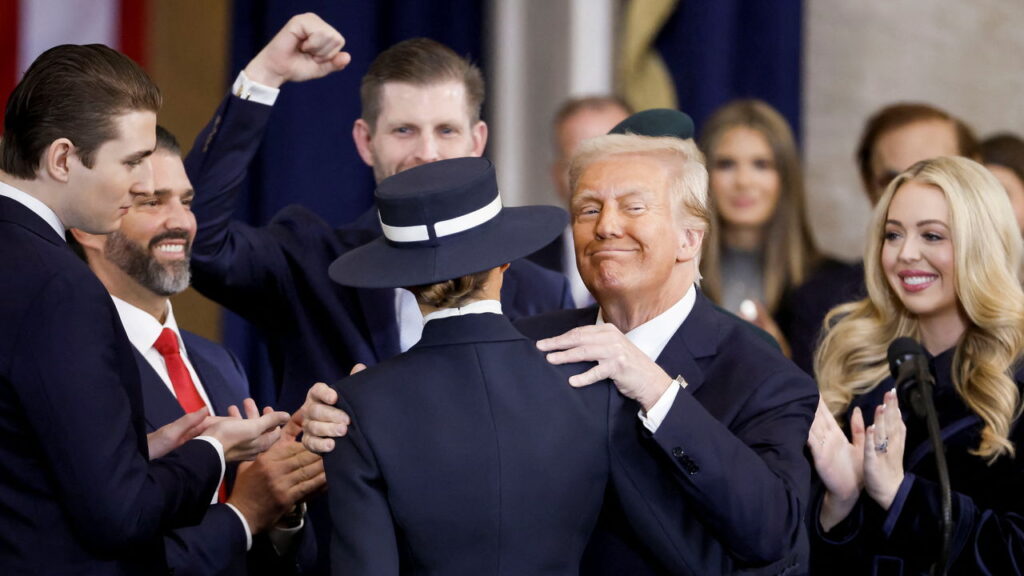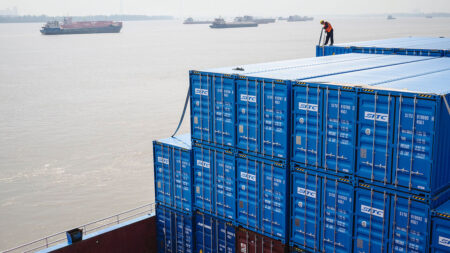Donald Trump embarked on his new presidential term with an unexpected display of caution and restraint, a significant deviation from the aggressive policies that characterized his previous tenure. Just a few months prior to securing the presidency, Trump publicly warned that he would commence his administration with the implementation of substantial tariff increases. These comments created a sense of anticipation—and anxiety—among various stakeholders, including international trade partners and financial markets. However, upon taking office, Trump chose a more temperate approach, indicating a desire to ease political tensions that could arise from abrupt economic shifts.
In his first decisive act, President Trump was preparing to issue a presidential memorandum. This memorandum outlined his administration’s emphasis on an “America First” trade policy, reflecting his commitment to prioritizing domestic interests in commercial dealings. This policy framework was not only designed to resonate with his core supporters but also aimed to recalibrate the United States’ relationships with significant trade partners, including China, Canada, and Mexico. By signaling a readiness to revisit and reevaluate these diplomatic and economic relationships, Trump hoped to create a foundation for negotiation that aligned with his administration’s objectives while minimizing backlash from foreign governments.
The financial markets responded positively to Trump’s measured beginning. Government officials and financial analysts breathed a sigh of relief, recognizing that a more calculated approach could foster stability in the volatile realm of international trade. As news of Trump’s moderated strategy circulated, foreign currencies appreciated, and stock markets entered a bullish phase, indicating renewed investor confidence and optimism. The absence of immediate drastic measures helped to assuage fears of economic upheaval, demonstrating that even a tempered approach from Trump could resonate favorably with global economic stakeholders.
Furthermore, the sudden shift from a combative stance to a more conciliatory one raised questions about the future direction of Trump’s trade policy. Analysts speculated on whether this initial caution would lead to further engagement and dialogue with trade partners or signal a longer-term commitment to a less confrontational approach. The “America First” policy framework suggested that there might still be undercurrents of protectionism; however, the pace of the proposed changes seemed designed to avoid causing immediate disruption to established trading relationships.
As Trump’s presidency unfolded, the implications of this memorandum began to gain traction across different sectors of the economy. Manufacturing sectors that heavily relied on imports began preparing for potential shifts in policy, while exporters awaited clarity on how his administration would repurpose international trade structures. The dynamics of the nafta negotiations and relations with China would inevitably shape the economic landscape of the United States in the coming months.
Moreover, despite this initial precedent of restraint, observers noted that establishing a new trade policy and revisiting existing agreements would not be a straightforward task. The complexity of renegotiating established treaties like the United States-Mexico-Canada Agreement (USMCA) and engaging China’s vast economic network posed significant diplomatic challenges. Any moves taken by Trump’s administration could easily provoke reactions from partner nations, stirring debates and negotiations, with the potential to escalate into contentious scenarios commonly witnessed during his previous term.
In conclusion, Donald Trump’s return to the presidential office was marked by a moment of unexpected diplomacy overshadowed by his past proclamations of aggressive economic tactics. By articulating a vision focused on an “America First” trade policy and a commitment to reassess trade relationships with key partners, Trump not only demonstrated an astute understanding of the current global economic environment but also opened a window to redefine the United States’ approach to international trade. The initial waves of relief felt in financial markets highlighted the delicate balance that international relations and trade policy must navigate to foster economic reassurance amidst political uncertainty. The forthcoming months will reveal whether Trump’s softer opening was merely a strategic pause or the prelude to a more harmonized approach toward America’s trade ambitions.









